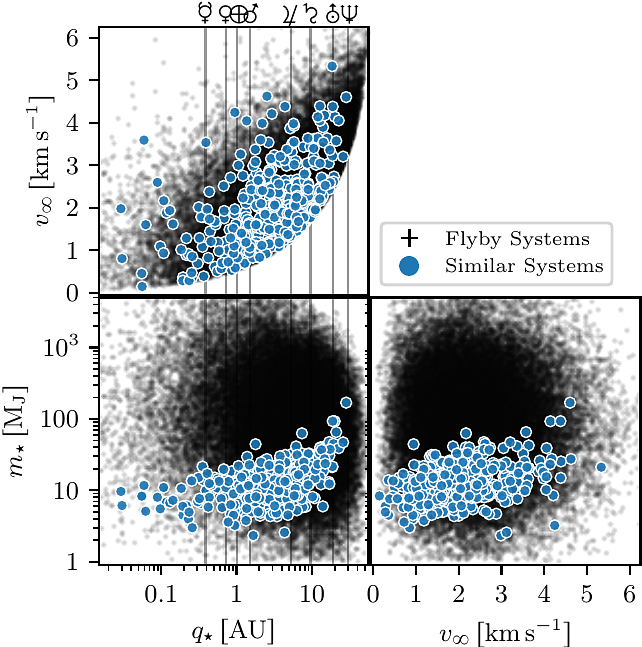A substellar flyby that shaped the orbits of the giant planets

A substellar flyby that shaped the orbits of the giant planets
Garett Brown, Renu Malhotra, Hanno Rein
AbstractThe modestly eccentric and non-coplanar orbits of the giant planets pose a challenge to solar system formation theories which generally indicate that the giant planets emerged from the protoplanetary disk in nearly perfectly circular and coplanar orbits. We demonstrate that a single encounter with a 2-50 Jupiter-mass object, passing through the solar system at a perihelion distance less than 20 AU and a hyperbolic excess velocity less than 6 km/s, can excite the giant planets' eccentricities and mutual inclinations to values comparable to those observed. We estimate that there is about a 1-in-100 chance that such a flyby produces a dynamical architecture similar to that of the solar system. We describe a metric to evaluate how closely a simulated system matches the eccentricity and inclination secular modes of the solar system. The scenario of a close encounter with a substellar object offers a plausible explanation for the origin of the moderate eccentricities and inclinations and the secular architecture of the planets.